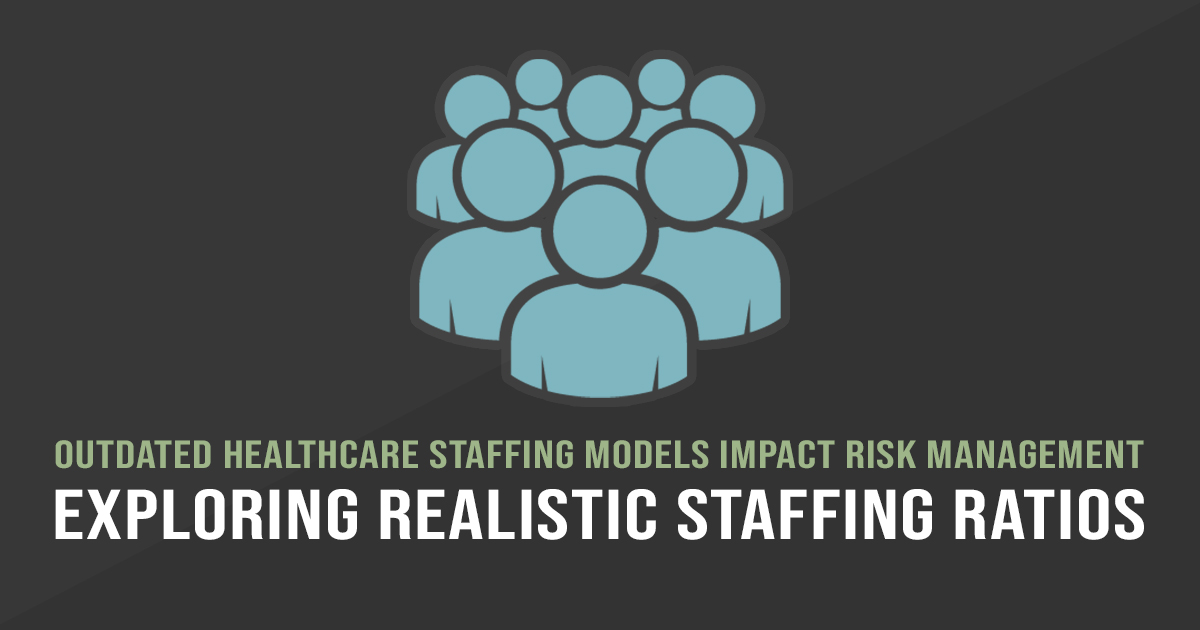Outdated Healthcare Staffing Models Silently Thwart Risk Management Goals

Recent significant strains on our healthcare system, especially bedside care providers, have highlighted the reality that institutional staffing ratios currently employed are based on outdated care delivery models and unrealistic budgetary considerations. As a result, organizational leadership is continually tasked with staffing units for maximum patient outcomes while exhausting the least resources possible. Historically, formulas have determined patient care staffing needs by calculating hours per patient per day. While individual state legislation has improved transparency in staffing ratios, the impact on actual patient care has been less than seismic. Continued focus on numbers rather than acuity and nurse skill level have plagued the process, and while staff has certainly suffered, patients have borne the brunt of this system failure.
From a risk management perspective, the trajectory from insufficient staffing to poor care and less-than-optimal outcomes should not be a surprise. Yet, somehow, to many facility executives, it is. Current evidence-based research points to lower nurse-to-patient staffing ratios as a key quality indicator for disease-specific outcomes and patient satisfaction. According to the American Nurses Association, we continue to face a staffing crisis challenged by an aging population, cost-saving strategies, and workplace stressors. Sicker patients with complex, multifaceted, interdisciplinary needs are the rule rather than the exception. Staffing models that consider the acuity of patients and the number of patients, while seemingly obvious, are rarely utilized.
Day after day, nurse staffing ratios continue to be purely numbers-driven. Even as the Covid pandemic magnified how patient acuity influences staffing deficiencies, numbers continued to drive staffing, fueling staff burnout and compassion fatigue, dissatisfied patients and families, and unsafe delivery of care. Nurse staffing norms are pennywise but pound foolish, adding to increased areas of exposure to liability requiring countless dollars spent defending resultant negligence claims. A thorough evaluation of how staffing is determined, considering more than just dollars and cents, but the complexity of patient acuity, nurse skill level, presence of ancillary staff, and treatments ordered, while more expensive, is more cost-effective in the long run.
The future of patient care delivery must include staffing ratios that allow for the realistic achievement of safe, evidence-based, quality care. Cost-prohibitive staffing ratios simply cannot support long-term risk management goals. Finding a way to fund more liberal staffing measures is a key component to achieving a culture of safety that respects the staff as human beings rather than numbers. Shifting away from numbers-based staffing is how leaders can chip away at the perils of poor patient outcomes while streamlining costs. Don’t get caught in the loop of endless tail chasing, trying to meet unworkable staffing expectations. Instead of ignoring patient acuity, incorporate it into your staffing model. The result will likely be long-term cost savings through decreased exposure to the liability pitfalls inherent in unreasonable staffing constraints.
At Med Law Advisory Partners, we not only evaluate medical malpractice claims but also assist our clients by looking for patterns of gaps in care that may indicate insufficient staffing, exposing the facility to litigation. Let us help you not only when litigation arises but let us help you identify potential issues upstream to avoid litigation downstream.